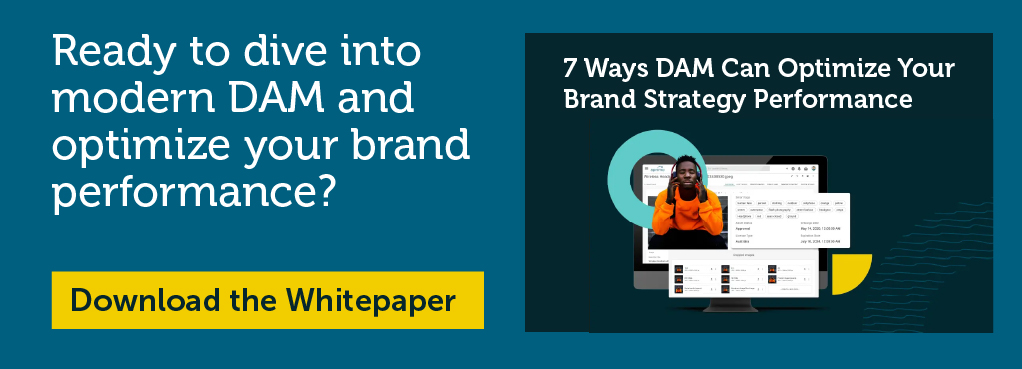Very few of us do our best work when we’re disorganized. It’s even harder to perform when the mess is digital.
Large repositories of information and assets must be well-organized and easily searchable to be useful. But organizing those assets can seem overwhelming. Often, content libraries grow unmanageable over time, with valuable assets squirreled away in file systems or hidden on customer-facing sites.
Good content structure requires forethought and management. It also requires that anything going into the organizational structure be just as easy to locate and retrieve. To achieve these goals, content teams use content architecture to create searchable, usable systems of categorizing and sharing information.
Today we’ll cover the basics of content architecture.
- What content architecture is
- Top benefits of clear content architecture structure
- The elements of a content architecture design
- Common types of content architecture
- How software helps build better content architecture
What is content architecture?
Content architecture means creating structure and organization in web content that provides a cohesive experience for readers. The content architecture uses marketing data to anticipate and serve user needs, goals, and behaviors, with the end goal of increasing engagement and conversion.
Content architecture governs everything that happens within your content library, both what customers see and what goes on behind the scenes. It helps content architects and marketing teams deliver consistent, on-brand messaging to the right audience at points of high intent. Marketers and designers achieve this through:
- Page layout
- Navigation structure
- Content categorization
- Taxonomy (labeling and tagging)
- Search engine optimization (SEO)
Marketers who achieve a thoughtful and effective hierarchy in their content components guide users toward desired behaviors and outcomes for higher campaign success.
Why is content architecture important?
Organization is the key to making the most of your content. It allows you to find, use, and repurpose the content within your libraries. Without a well-constructed content architecture, teams can’t plan content development, find what they need, or execute their goals.
A well-structured architecture removes the barriers to efficient and effective content management. Let’s look at the benefits of content architecture:
Better content planning: Before you build content, you need workflows for its development. Strong content architecture provides the information and structure needed to build successful plans and carry them out. With a full view of your content portfolio, you’ll be able to identify gaps in your offering and see opportunities to build from the assets already in-house.
Faster content development: Building and executing a content strategy is easier when your content is well-organized. It gives content and creative teams easy access to the content needed to build customer experiences. Using a content operations platform, teams can deliver compliant content faster to keep up with the increased demand for relevant messaging and information across channels.
Stronger team collaboration: Well-structured repositories help everyone find what they need. This is vital in teams that create omnichannel experiences and need to work across the marketing team and organization to deliver video, audio, images, and text that remains brand compliant.
Better user experience: All the organization on the back end provides the materials to build immersive experiences. When these content pieces are well-organized on-page, it empowers customers to find and engage with the right content at the right time. Think of it like a well-marked directory in a mall. It helps visitors quickly determine the best place to go and find what they expect once they get there.
Higher ROI: Hidden caches and siloed assets reduce your ability to create content at scale. Clear content architecture ensures that teams have access to every content piece and individual asset, allowing them to maximize the use and performance of their library. This will be a competitive advantage for marketers, as only 41% of B2B marketing organizations can view and analyze content performance metrics by audience, and only 34% can do the same by theme or topic, according to research from Forrester.
Elements of content architecture
Many aspects of content architecture work together to improve user experience, search engine optimization, and content discoverability.
Here are the most prominent elements of content architecture:
Information architecture: The structure and organization of all the content on a website or in a library. This includes the style of architecture, whether hierarchical, sequential, or matrixed (more on these below), as well as the technical structures used to organize, store, search for, and present content.
Navigation: The link system that allows users to find and access content. It includes elements such as menus, links, and search bars that direct users to particular pages or sections of a website or library.
Taxonomy: The system of labeling and sorting content into meaningful categories and subcategories. Taxonomies provide structure to the content and can be used to organize it to make it easier for users to find what they need.
Content model: A visual reference for on-page structures that create and organize structured data such as webpages or documents. Content models outline how information should be presented, how it should appear to the end user, and what elements each piece of content should include.
Wireframes: An organizational representation of the content architecture of a website or library. It’s sometimes described as skeletons or frameworks on which to build a site or library. It is a visual guide that outlines the elements and structure of a project. Wireframes are used to plan what content should go on each page, as well as where that content should go.
Structured content: A detailed breakdown of a piece of content. For instance, in every blog post, the content strategist decides the components that should go into each piece of content:
- Headline
- Byline
- Hero image
- Search engine snippet
- Embedded content (like a related video)
- CTA
This outline of expectations provides structure and consistency for each content piece across every channel.
Types of content architecture systems
Building a content management system involves a thoughtful design process incorporating the right technical architecture needed to bring it together. When building content architecture, users consider the following three types of design: Hierarchical, sequential, and matrix.
- Hierarchical structures information into distinct levels, each containing more specific and detailed information about the topic. This type of design is often used for navigation systems, as it provides users with a clear way to find what they are looking for by drilling down from more general topics.
- Sequential organizes information in an ordered and linear way. This means that information is presented step-by-step, allowing users to easily progress from one topic or point to the next. Sequential designs often utilize page numbers or section headings to guide users through the content. Another great example is a checkout procedure, where the system guides the user through selection, order finalization, optional upselling, payment and shipping info, and confirmation.
- Matrix allows the user to define the structure of the content presented. This means allowing them to sort through information (for instance, blog articles) according to their own preferences, such as a date, category, or content type. Self-directed architecture is more complex than other forms of architecture because it relies on a user’s individual input and understanding to be effective.
Technological foundations for composable content operations
Using software to organize content repositories is vital to the success of content operations. Two popular methods of building technical capabilities for information storage and organization are monolithic and composable architectures.
Monolithic architecture systems
For years considered the gold standard, monolithic systems from enterprise-class software providers gave stakeholders a one-stop shop for building an information architecture. These large, out-of-the-box systems provided every aspect of the content experience?from landing page generation to ecommerce check-out systems?under one platform.
While these systems provided benefits in ease of deployment (no software conflicts or connectors necessary) and simplified operations, they removed the possibility of building a strong, customized system using the best available services.
Composable content architecture (CCA)
Underpinning your content architecture for web/CMS delivery is the actual architectural foundation of the software that supports it. In this case, we’re talking about composable architecture, which is an architectural pattern that maximizes the different configurations of your content stack solutions by mandating that each component in the system have standardized interfaces, namely APIs.
A new school of thought regarding technical solutions to information architecture has emerged within the last decade. The composable content architecture approach to marketing tech stacks allows administrators to select the best microservices for their content needs, ?composing? the total tech stack from a selection of microservices and apps. The result is a highly customizable, useful, and flexible system for delivering content and engaging with customers.
Headless architecture lends itself to scaling and organizational changes, as stack elements may be expanded, removed, or refined according to team requirements. Nearly 75% of respondents to a recent Salesforce study say this architecture makes it more likely to rapidly expand into new channels (77%) than non-headless companies (54%).
A Composable Content Operations platform allows your business to get more agile, adopt best-of-breed, or ?best-for-me? solutions, helping teams adapt to, and adopt, new technologies, while scaling and optimizing their content operations as the business grows and the marketing organization evolves.
Improve content architecture with Aprimo
A thoughtful approach to content management and information architecture yields various benefits. These benefits are enhanced when you incorporate the best content management tools into your technical stack. Aprimo digital asset management (DAM) offers teams a modern, searchable DAM that organizes every asset for maximum ROI and content performance. Some features that set Aprimo apart include:
- Rich taxonomy and metadata features for searchability and contextual results that allow your creative teams to find, create, and reuse content more easily.
- Robust reporting and performance management features allow you to see your content marketing results in real time.
- Strong integration capabilities with the rest of the tools within your marketing stack.
Start improving your content architecture today with a free trial of Aprimo DAM.



